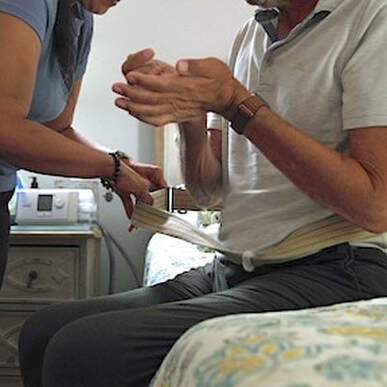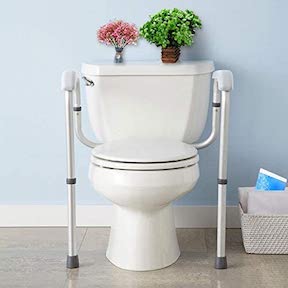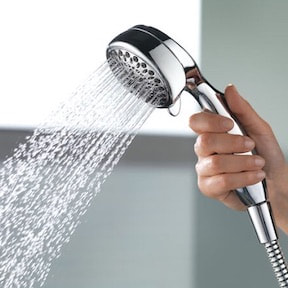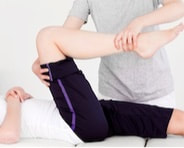HOME AND DAILY LIVING GUIDE
|
If you are a paid caregiver or home health aide who is or will be caring for a client living with ALS, this guide is for you. Caring for a person living with ALS is rewarding and challenging work that requires an understanding of the disease and the specific needs of your client. This guide will help you:
|
Your work will not only improve your client’s quality of life, it will provide a much-needed break for family caregivers. As you care for your client, be sure to take care of your own mental and physical health as well. Thank you in advance for your time, energy, care, and dedication.
Understanding ALS
ALS is considered a rare disease, which means that even experienced caregivers may have never worked with a client who has ALS.
Here are a few facts:
Here are a few facts:
- Average life expectancy is roughly 3-5 years after diagnosis, though 10% of people with ALS will live ten years or longer.
- ALS can affect adults at any age, though it often begins in the mid-to-late 50s and older.
- For about 90% of people, the cause of ALS is unknown. Up to 10% of cases are genetic.
- ALS is not contagious.
- A few medications can help slow the disease, but only by months.
|
ALS is a progressive disease, so the needs of your client will continue to change. ALS affects everyone differently. For many, it begins by weakening muscles in the arms and legs. For others, it begins by affecting the ability to speak and swallow. For some, it affects their breathing first. However ALS begins, it will eventually affect the whole body.
Some people with ALS may experience subtle changes in thinking and behavior over time. A small percentage will experience the more noticeable symptoms of frontotemporal dementia (FTD) such as inappropriate behavior, irritability, impulsivity, and impaired social skills. |
|
To learn more about the disease, visit our About ALS section.
Caring for ALS Is Different
Caring for a person living with ALS can be more demanding than other types of care. It will require the physical strength to support and assist with safe transfers as well as the stamina to address many different needs throughout the day.
|
|
|
|
|
Caring for someone living with ALS can also be emotionally challenging. Your client will continue to lose the ability to do things like walk, eat, talk, and breathe. You will be working with someone whose physical decline will sooner or later lead to death.
If you feel that you are up to the challenge, this caregiver guide and website—along with the support of ALS professionals—can help you provide the best possible care for your client.
If you feel that you are up to the challenge, this caregiver guide and website—along with the support of ALS professionals—can help you provide the best possible care for your client.
Partnering with Your Client and Family
|
Supporting a family impacted by ALS is about more than care and logistics. It is also about establishing trust, developing a meaningful relationship, and communicating clearly.
It is important to understand your family’s routines, preferences, and expectations. Don’t be afraid to ask your client and family members how they would like to communicate with you, if they would like privacy in certain parts of the house, etc. |
|
|
Here are some other suggestions that may help:
|
|
Remember that every day will be different for a person living with ALS. Each time you arrive, it is important to understand how your client is doing and what has been happening since your last visit. Try to ask specific questions like:
It can also be helpful to ask family members how things have been and if there is anything you should know.
Try to keep in mind that living with ALS and not being able to do everyday things is incredibly frustrating. Your client may cycle through strong emotions like frustration, anger, and sadness. They may also be chronically short on sleep. So if your client isn’t always kind and takes some emotions out on you, do your best to keep a positive attitude and not take things personally.
- Has anything changed since I last saw you?
- How have your last 24 hours been?
- Did you sleep well last night?
- How is your energy level?
- How is your mood?
- Have you fallen since I last saw you?
It can also be helpful to ask family members how things have been and if there is anything you should know.
Try to keep in mind that living with ALS and not being able to do everyday things is incredibly frustrating. Your client may cycle through strong emotions like frustration, anger, and sadness. They may also be chronically short on sleep. So if your client isn’t always kind and takes some emotions out on you, do your best to keep a positive attitude and not take things personally.
Learning How to Use Equipment
|
As the disease progresses, people living with ALS need to use many different types of medical equipment and devices. Your client and family may ask you to help operate some or all of them.
Before using medical equipment, it is important to find out which devices you are and are not permitted to use according to your certification. You can ask your home health care agency, check your state’s laws, or reach out to a local ALS organization. Once you know what you are and are not permitted to do, communicate that with your family. If you have permission to operate a certain device but do not have experience with it, ask for training from your client, family caregiver, agency, or medical equipment professionals. Your client’s safety must be the number one priority, so you need to know how to operate each device before using it. |
|
Asking for the Support You Need
|
Whenever you don’t know something or feel like you need answers or additional support, it is important to be proactive and ask questions. It’s okay if you don’t know how to do something or are struggling with a certain situation.
Your client and family caregiver should be able to answer many of your questions about how to do specific things. But if you feel you need additional training or support, reach out to your home health care agency or the professionals who are already supporting your client. Many patients attend an ALS clinic and work with a team of medical professionals like physical therapists, occupational therapists, nurses, and social workers. Your client may also be registered with a local ALS organization that has professionals who can support you. |
Your family may have home health professionals like nurses or physical or occupational therapists who come into their home to provide specific, short-term care. And there may be others who visit to help fix or adjust respiratory, mobility, and communication devices.
If you ask, your family may be able to connect you with professionals who can either answer your questions over the phone or help train you in person.
If you would like to further understand your client’s needs, ask if you can accompany your client on an ALS clinic visit or attend an ALS support group.
If you ask, your family may be able to connect you with professionals who can either answer your questions over the phone or help train you in person.
If you would like to further understand your client’s needs, ask if you can accompany your client on an ALS clinic visit or attend an ALS support group.
Visit The ALS Home And Daily Living Guide
You may be able to find answers to many of your questions in our ALS Home and Daily Living Guide. This free, online caregiving guide has tips, information, and videos with ALS experts on topics like bathing, toileting, mobility, transferring, grooming, and dressing.
|
|
If you would like to learn how to transfer your client using devices like a patient (Hoyer) lift, visit our Transferring page.
|
|
|
|
To learn how you can help your client use the toilet with and without caregiver assistance, visit our Toileting page.
|
|
|
|
If you would like to learn how to safely bathe your client at different stages of the disease, visit our Bathing page.
|
|
|
|
To learn how to modify food and liquids, use assistive devices, and safely feed your client, visit our Eating page.
|
|
|
|
If you would like to learn how to assist your client with range of motion exercises, visit our Range of Motion page.
|
|
|
|
|
|










